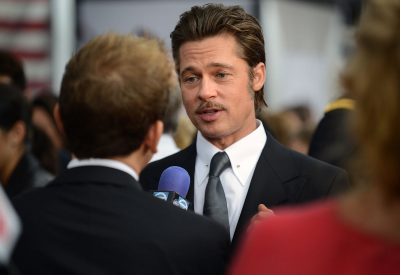The sci-fi genre has seen it all — a man turn himself into a fly, a private detective hunting down robots, inter-dimensional travel and so much more. “Ad Astra” strives to include the tropes found in traditional science fiction, while also exploring the intricacies of human connection.

“Ad Astra” tells an intimate story about the burdens fathers pass onto their sons and the search for a purpose to our daily lives on an epic, inter-planetary scale.
In the near future, astronaut Roy McBride, played by Brad Pitt, is tasked with finding his long-lost father Clifford, played by Tommy-Lee Jones, a legendary astronaut last seen orbiting around Neptune.
Pitt’s performance in “Ad Astra” is silent and internalized, as opposed to using his charisma or comedic acts in his other movies. A clenched jaw, tired eyes and a quiet voice define his performance for the first half of the movie. In one scene, Pitt’s eyes begin to scream with emotion and his speech becomes distorted as his bottled-up sensitivity starts to bubble above the surface. The prospect of seeing his father once again eats at Roy throughout the film.
It’s that perfectly-calibrated depiction of the damage done from repressed vulnerability what calibrated depiction of the damage repressed vulnerability can cause that makes Pitt’s performance so engrossing.
Roy’s search for his father takes him to the moon and Mars, two locations that “Ad Astra” playfully adapts to its near-future setting.The use of everyday places on Earth in foreign settings makes the film’s worldbuilding smart and realistic. Commercial rocket-trips to space operate just like modern-day airplane flights, the moon is overrun with storefronts and underground Mars bunkers are filled with government bureaucrats.
The uninhabited sections of the moon in “Ad Astra” are a lawless, pirate filled wasteland with the nickname the “wild west.” When Roy’s journey takes him into a particularly dangerous stretch on the moon, a moon-buggy chase ensues that’s one of the most inventive action scenes of the year.
Despite its action set pieces, “Ad Astra’s” slow, episodic pace is more likely to put audiences into a hypnotic trance than thrill them. The film’s lack of dialogue allows its stunning visuals to do the majority of the storytelling.
Hoyte van Hoytema, the film’s cinematographer, frequently contrasts the smallness of “Ad Astra’s” characters with the vast expanse of space to emphasize the characters’ isolation. A neat touch also included the film’s lighting becoming colder and less natural as Roy gets further from the sun and closer to his the moon and Mars.
The film’s visuals reflect its characters’ isolation. The camera pans are smooth, slow and in control. The film substitutes hand-held camera work for locked-down tripod shots and this lack of human imperfection within “Ad Astra’s” camerawork makes the film feel sterile and cold.
What keeps “Ad Astra” cohesive while it jumps between action-oriented setpieces and its minimalist, visually-oriented moments is its constant melancholic, lonely tone. The film doesn’t celebrate guns being fired or punches being thrown. Instead, those scenes were treated with the same mournfulness and gravity as Roy’s personal struggle.
The film suggests that in a time where humanity looks for meaning in abstract concepts, whether that is the search for extraterrestrial life or a distant memory of one’s father, perhaps more meaning can be derived through concrete, human connections.
“Ad Astra” offers audiences an intimate, personal story made up of classic science-fiction tropes.















I heard this movie was boring but after reading your review I am definitely going to give it a chance.